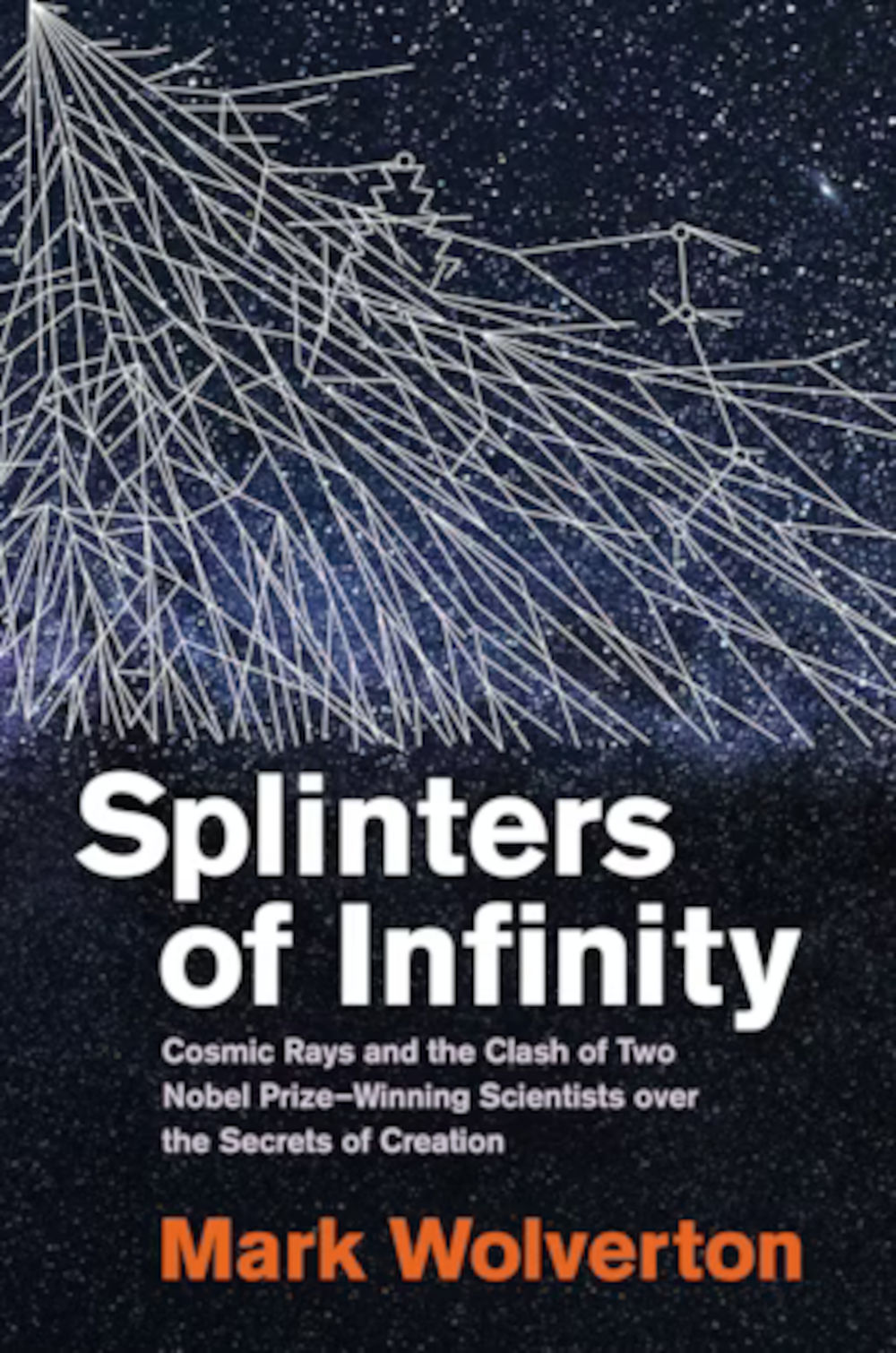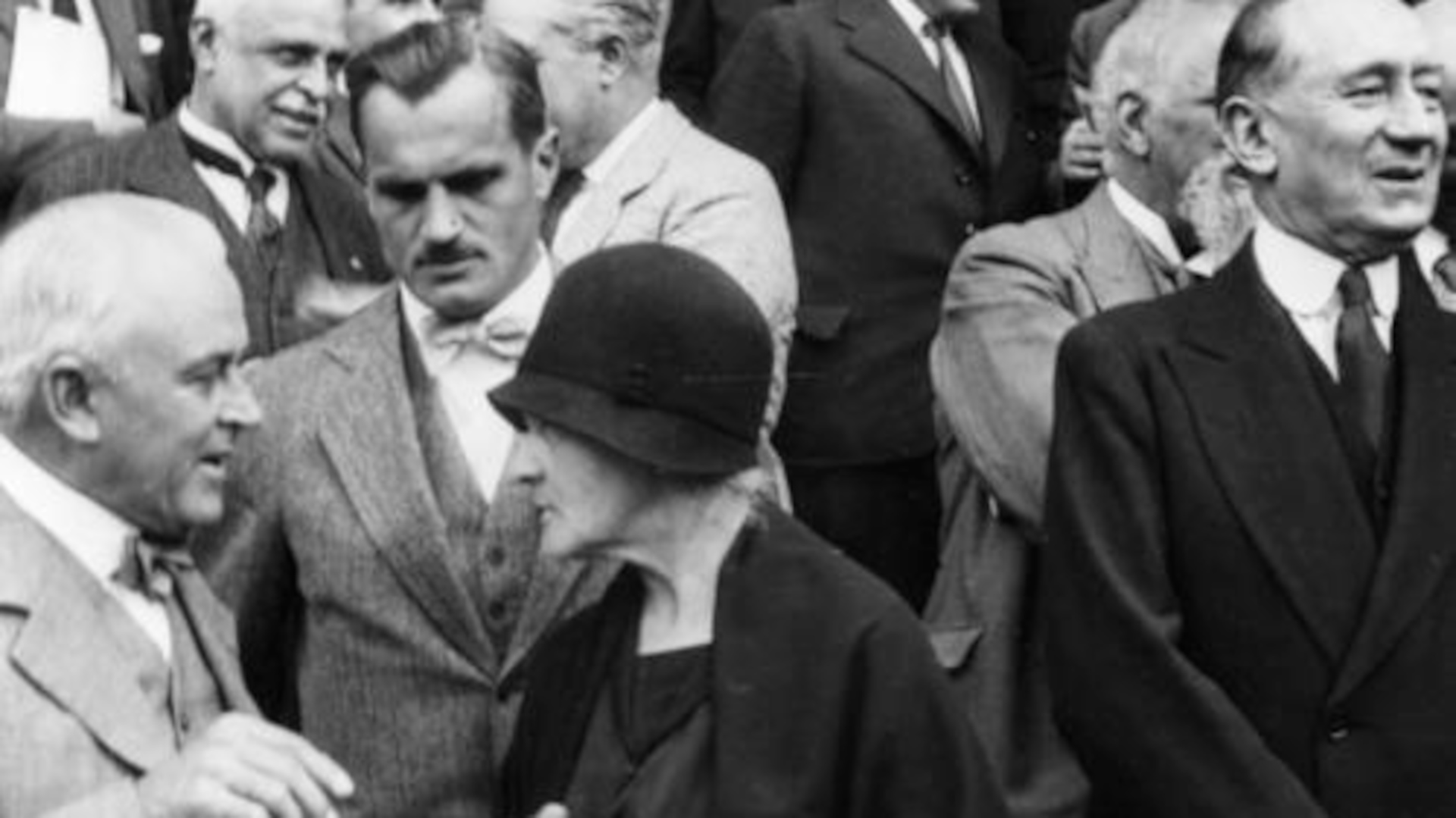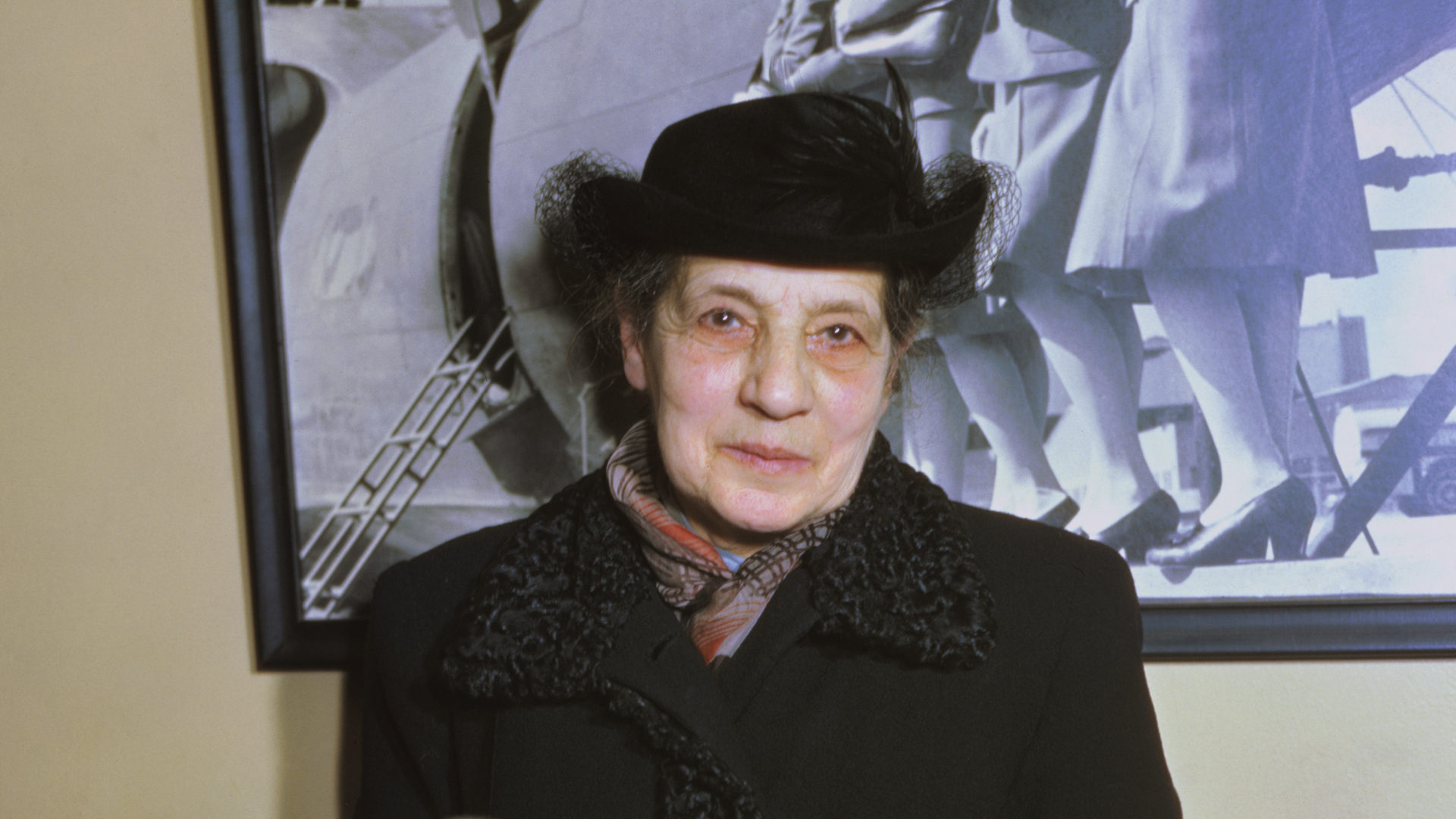Wolfgang Pauli was in something of an agitated state. The Austrian scientist found himself in Rome in 1931, in a seething mixture of nervousness, excitement, and consternation.
Only 31, he was already a rising star in the new and rapidly developing field of quantum physics, working with luminaries such as Niels Bohr in Copenhagen and Max Born in Göttingen, and appointed a professor of theoretical physics at the Federal Institute of Technology in Zurich in 1928. He had already worked out some of the fundamental precepts of the quantum physics revolution, most famously what had become known as the “Pauli exclusion principle,” and most recently had come up with a controversial explanation for a nuclear process called beta decay, proposing the existence of a new particle with no mass or electric charge and therefore almost impossible to detect.

The accompanying article is excerpted and adapted from “Splinters of Infinity: Cosmic Rays and the Clash of Two Nobel Prize-Winning Scientists Over the Secrets of Creation,” by Mark Wolverton. (MIT Press, 280 pages.)
Still recovering from a divorce and personal upheaval the previous year, he was in need of some distraction and professional affirmation. He was in Rome for what was billed as the first international conference in nuclear physics, organized by the Royal Academy of Italy, presided over by academy president Guglielmo Marconi and chiefly organized by Enrico Fermi, noted Italian physicist and another leading light of nuclear physics.
“Fermi asked me to talk about my new idea, but I was still cautious and did not speak in public … only privately,” Pauli wrote later in a letter to a friend. Though not known either for shyness or timidity, he was also too careful a scientist to go too far out on a professional limb for the sake of still-developing ideas that might not pan out, and that many other more august colleagues, such as fellow conference attendee Niels Bohr, found decidedly dubious.
So that accounted for the nervousness. The excitement came from the conference itself: the opportunity to meet, socialize, and schmooze with so many fellow scientists and hear their stimulating ideas about the fertile new fields of nuclear physics, quantum mechanics, and the especially controversial topic of cosmic rays.
Assembling at the Rome conference was practically a roll call of the world’s most eminent physicists, not merely Fermi, Bohr, and Marconi, but also Marie Curie, Werner Heisenberg, Arnold Sommerfeld, Lise Meitner, Peter Debye, and even two American Nobel physics laureates, Robert Millikan and Arthur Compton. The only notable physicist conspicuous for his absence was the world’s most famous example, Albert Einstein, who declined to attend, apparently out of protest to the fascist government of Benito Mussolini and its decree earlier this year forcing Italian professors to sign a loyalty pledge to the regime.
This was also the main source of Pauli’s consternation, and likewise for quite a few of the other attendees. Under Il Duce’s rule, the Royal Academy of Italy had essentially displaced and superseded the Accademia dei Lincei, one of Europe’s oldest and most venerable academic bodies, which had counted Galileo among its members. Under Mussolini, however, it became largely another organ of the fascist state, ultimately existing to glorify the leaders. Holding a prestigious international conferences attended by world-class scholars was an effective way to “promote Italian research and culture in the international peer communities and to give Italy and fascism a good name in international public opinion,” wrote political historian Hans Geleijnse.
Assembling at the Rome conference was practically a roll call of the world’s most eminent physicists.
If anyone had any doubts on that score, they had only to note that the opening of the conference on Sunday, October 11, 1931, was presided over by Mussolini, his prime minister, and his other chief lackeys, all resplendent in fascist finery. Willingly or not, Royal Academy of Italy president Marconi publicly praised Il Duce for his support and his ostensible enthusiasm for theoretical physics.
Conference organizer Fermi was not a supporter of fascism and would later leave Italy in 1938 when Mussolini followed the example of his fellow dictator Adolf Hitler by enacting anti-Jewish laws. For now, though, he did his best to keep politics out of the conference, assuring participants that the proceedings would remain strictly scientific.
Scientists were supposed to be civil, polite, disinterested, above it all. Still, some concessions had to be made, distasteful as they might be. As Pauli later noted, those mostly came at the formal receptions, as he wrote to his friend: “Horribile dictu, I had to shake hands with Mussolini.”
In the days before routine commercial airline travel, intercontinental journeys weren’t casual affairs. Distances, whether across the surface of the globe from one point to another or from the ground up into the reaches of the sky, that would later become inconsequential were anything but casual in the early 20th century. If you were traveling from the United States to Europe, for example, you first had to get to a major port city such as New York or Boston, which unless you were fortunate enough to live in or near meant a train trip of several days to a week. Then there was the transatlantic voyage, which took one or two weeks, ending at another major port city such as London, and then further travel from there to one’s ultimate destination, again usually by train.
If you were an eminent American academic and scientist, that meant putting your lab work and teaching on hold or leaving it in the hopefully capable hands of your graduate students, and clearing your schedule probably for at least a month. So one didn’t do such things lightly. You wanted to have a good reason for such an investment of time and energy, not to mention money (even though your university would probably pay for the trip, at least if you were a big shot).
In the United States of the 1920s, Robert Andrews Millikan was definitely a big shot. It would be enough that he was the second American physicist to win the Nobel Prize, but he had also helped to establish the California Institute of Technology (known as Caltech), which was steadily becoming a friendly rival of long-established centers of scientific learning such as the Massachusetts Institute of Technology, Harvard University, and the University of Chicago.
To Millikan, taking long and exhausting global journeys all came with the territory of being America’s most celebrated and eminent scientist. His 1923 Nobel Prize in physics had come mainly for measuring the charge of the electron, a nagging problem in physics that especially appealed to his passion for exactitude, precise measurement, and hands-on experimentation. It also provided a long-awaited confirmation of his scientific self-worth at last. Until he began the electron work at age 41, he’d been leading a respectable but relatively unexciting career, noted mostly as a professor who’d written some successful physics textbooks.
Cosmic rays, Millikan declared, were “the birth cries of atoms being born in interstellar space.”
After his Nobel triumph, Millikan turned his talents to the study of the mysterious ambient radiation that scientists had begun to detect in the atmosphere. By 1925, Millikan proved that these mystery “rays” were coming not from the atmosphere or the ground, but from outer space, and dubbed them cosmic rays. Further work by Millikan and others confirmed their extraterrestrial origin.
But as is usually the case with science, solving one mystery merely revealed a completely new one. What exactly were these cosmic rays? Specifically, were they charged particles like the electron, or neutral packets of energy such as photons of light? Millikan decided the latter, and given his status and obvious expertise, few were inclined to contest him, at least publicly. The cosmic rays, he declared, were “the birth cries of atoms being born in interstellar space.”
Such a statement had more than strictly scientific implications. In those years when even such basic questions as the age and size of the universe, much less its origins, were still far from settled, Millikan was, in effect, proposing an entirely new cosmology, a vision of a universe continually creating and re-creating itself throughout eternity. For the public, such talk of creation inevitably invoked talk of a Creator, especially in the wake of the infamous Scopes trial of 1925. Millikan, who had a decidedly religious bent himself, did nothing to dissuade such associations.
Earlier in 1931, Millikan, never one to shy away from a scientific argument especially if it challenged him personally, had participated in a public debate with the British astronomer James Jeans, then visiting Caltech in Pasadena. Jeans, among other scientists such as Arthur Eddington, rejected the whole “birth cries” notion, holding that the second law of thermodynamics portended an eventual end of the universe as it was finally overtaken by entropy or “heat death.” To these scientists, cosmic rays weren’t “birth cries” but “death wails” resulting from the annihilation of atoms inside stars.
That was anathema to the scientific and especially the spiritual inclinations of Millikan. A universe that wasn’t eternal and unchanging, one doomed to wind down inevitably into cold, dark, ultimate oblivion? Horribile dictu, indeed.
Just before Millikan arrived in Rome for the physics conference to (reluctantly) shake hands with Mussolini, he had been in London attending another scientific meeting, which featured another more-or-less civil debate with Jeans, who was now on his home turf. Jeans still contended that cosmic rays proved that the universe was decidedly as mortal as human beings themselves, and was “a mere transitory, ephemeral structure.”
Millikan was, in effect, proposing an entirely new cosmology, a vision of a universe continually creating and re-creating itself throughout eternity.
Millikan shot back that “the evidence that cosmic rays furnish for the annihilation theory is not worth a whoop.” His hometown paper, The Los Angeles Times, reported that “America’s foremost physicist” would return from his European travels “with added fame because of his stirring up of the British scientists by his stout insistence upon his theory.”
Millikan came to Rome also somewhat stirred up and cranky, though also looking forward to seeing old friends and colleagues and brainstorming with them over the continuing ferment of new developments in physics. He may have also been expecting a bit of rest and relaxation before moving on to lecture in Paris and elsewhere in Europe, including a visit to Einstein. He was likely not expecting yet another challenge to his stoutly insistent scientific theories.
He was about to be sorely disappointed. Not only were more challengers waiting in the wings, but a younger, not-quite-as-eminent colleague — Arthur Compton — would be inspired by the conference to become his greatest and most persistent challenger of all.











